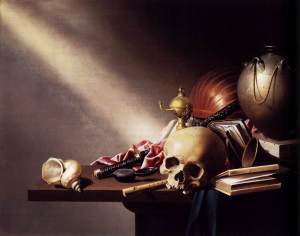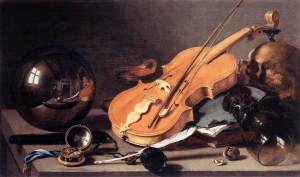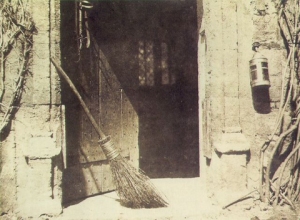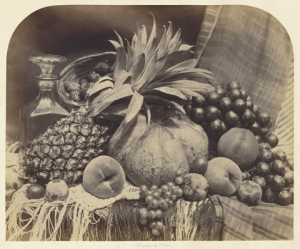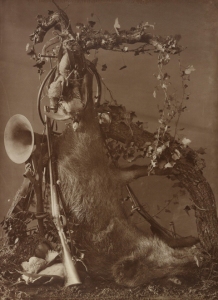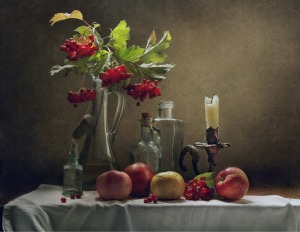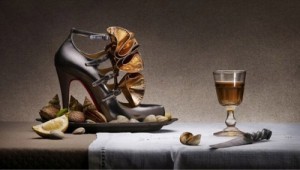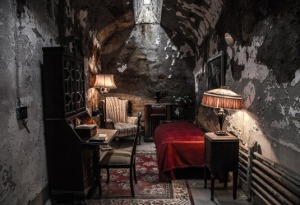STILL LIFE:
Over the centuries artists have chosen the subject of still life for a variety of reasons: to reflect the status of their owner, be it humble or haughty; for their symbolic meaning which reveals a hidden story or idea; to capture the natural beauty of transient object like a flower or fruit; to demonstrate the artist’s skilled painting technique; or as a controlled structure to express the abstract qualities of the visual elements. Still life as a subject has provided a platform for artists of different eras to explore their relationship with the world of objects that surround us. As our world evolves, new products, artefacts and modern media will continue to suggest new avenues for the stylistic development and reinvention of still life as a subject in art (and photography).
Courtesy of: http://www.artyfactory.com/
The concept of ‘still life’ in art has been around since the time of the ancient Egyptians, was carried on through the Greeks and Romans, but it wasn’t taken seriously until the Renaissance and the emergence of the Dutch school of painting. Painters like Jan van Eyck, Hans Holbein and Caravaggio used various objects within their paintings, but the Dutch school took still life to another level, especially with their ‘vanitas’ ensembles. Taken from a biblical quotation: “Vanity of vanities, all is vanity.” Artists like Pieter Claesz and Harmen Steenwijck would portray the fact that people loved the pleasures of life that made them feel important or wealthy, however we all ultimately die and this lust for earthly goods could prove to be an obstacle on the path to salvation. The objects used within these paintings like the human skull, shells, books, musical instruments, silk & sword, stoneware jars, glasses of wine etc are all said to be symbolic and contribute to the overall message…
Harmen Steenwijck – An Allegory of the Vanities of Human Life.
Courtesy of: http://www.wga.hu/ [Accessed 18 March 2015]
This reminds the viewer of the transience of human life and the ultimate futility of all human endeavours and worldly possessions, which here are represented by the books (knowledge), the musical instruments (pleasure), the sword (power and wealth), and the seashell (wealth). The skull refers directly to death.
Pieter Claesz – Vanitas with Violin and Glass Ball.
Courtesy of: http://www.wga.hu/ [Accessed 18 March 2015]
The glass ball is a fascinating, unusual motif. Reflected in its spherical surface is a self-portrait of the artist at his easel. . The reflection of Claesz’s self-portrait in his still-life may also be understood as a pointer to the fact that every painting conceals more than it reveals. In its reflective fragility, the glass ball also recalls a soap bubble, a conventional symbol in still-life painting for the fatal frailty of human life – man is like a soap bubble.
The use of still life in painting would continue on through the 19th and on into the 20th century through movements like Impressionism, Post-Impressionism, Cubism and Fauvism. Artists like Paul Cezanne, Vincent van Gogh, Pablo Picasso, Georges Braque and Henri Matisse would all excel with their takes on the concept of still life. The arrival of photography would also see early pioneers like William Fox Talbot, Roger Fenton and Adolphe Braun use still life as a means to an end…
William Fox Talbot – The Open Door.
Courtesy of: http://www.theasc.com/ [Accessed 18 March 2015]
The first major album of photographs was Henry Fox Talbot’s ‘The Pencil of Nature’ (1844). Plate VI, titled The Open Door is also a still life of a broom.
Roger Fenton – Still Life with Fruit and Decanter.
Courtesy of: http://www.theasc.com/ [Accessed 18 March 2015]
Getty Museum curator Paul Martineau, however, finds a sense of movement even in this classic “still life.” The diagonal axes created by the pineapple and drape, and by the gourd and berry basket, help to add dynamism and depth to this lavish composition. It is precisely these internal, dynamic vectors in a seeming still image that will become a near constant in 20th century photographic still lives.
Adolphe Braun – A Hunting Scene.
Courtesy of: http://www.theasc.com/ [Accessed 18 March 2015]
The following still life images have been taken by some of the top professional photographers of today, some follow in the ‘vanitas’ tradition whilst others are more conceptual / abstract…
Anatoly Che – Still Life
Courtesy of: http://www.creativebloq.com/ [Accessed 02 April 2015]
One of many stunning ‘traditional’ still life photographs taken by Anatoly Che.
Peter Lipmann – Christian Louboutin advert.
Courtesy of: http://www.wicked-halo.com/ [Accessed 02 April 2015]
Still life with a twist taken from an advertising campaign by Christian Louboutin. One of a series where each shoe was impeccably placed in a representation of classic 18th Century still life paintings.
Brian Estelle – Home Sweet Home.
Courtesy of: http://www.creativebloq.com/ [Accessed 02 April 2015]
Different take on a still life, a photograph of Al Capone’s cell, still intact in the abandoned Eastern State Penitentiary, Philadelphia.
Horacio Salinas – Conceptual Still Life.
Courtesy of: http://www.odditycentral.com/ [Accessed 02 April 2015]
Argentinian born conceptual photographer Horacio Salinas proves that common everyday objects can be transformed into a still life that will make you smile.
The final photograph that I would like to present is my own personal take on a still life which was taken during our still life workshop inside a photographic tent, using a Nikon D90 and personal objects that I had taken in for this specific purpose.
Paul Riddell – My Life Right Now
I would say it’s a hybrid still life, as I am sure some of the objects I have included could be construed as being symbolic of modern day life. I was hoping to portray my love of my family, football and music, interspersed with some of the trappings of modern day life and pointers to my University degree.
